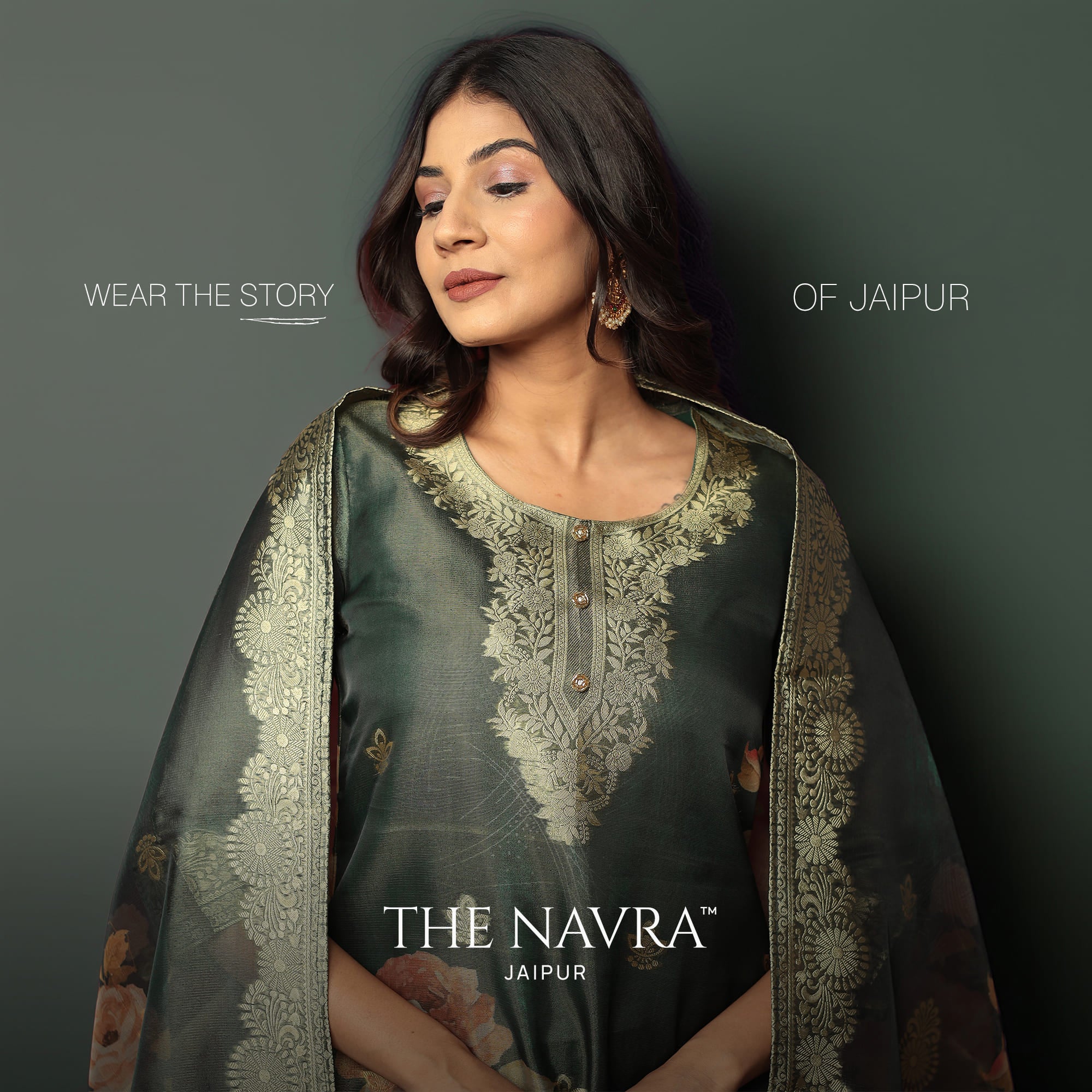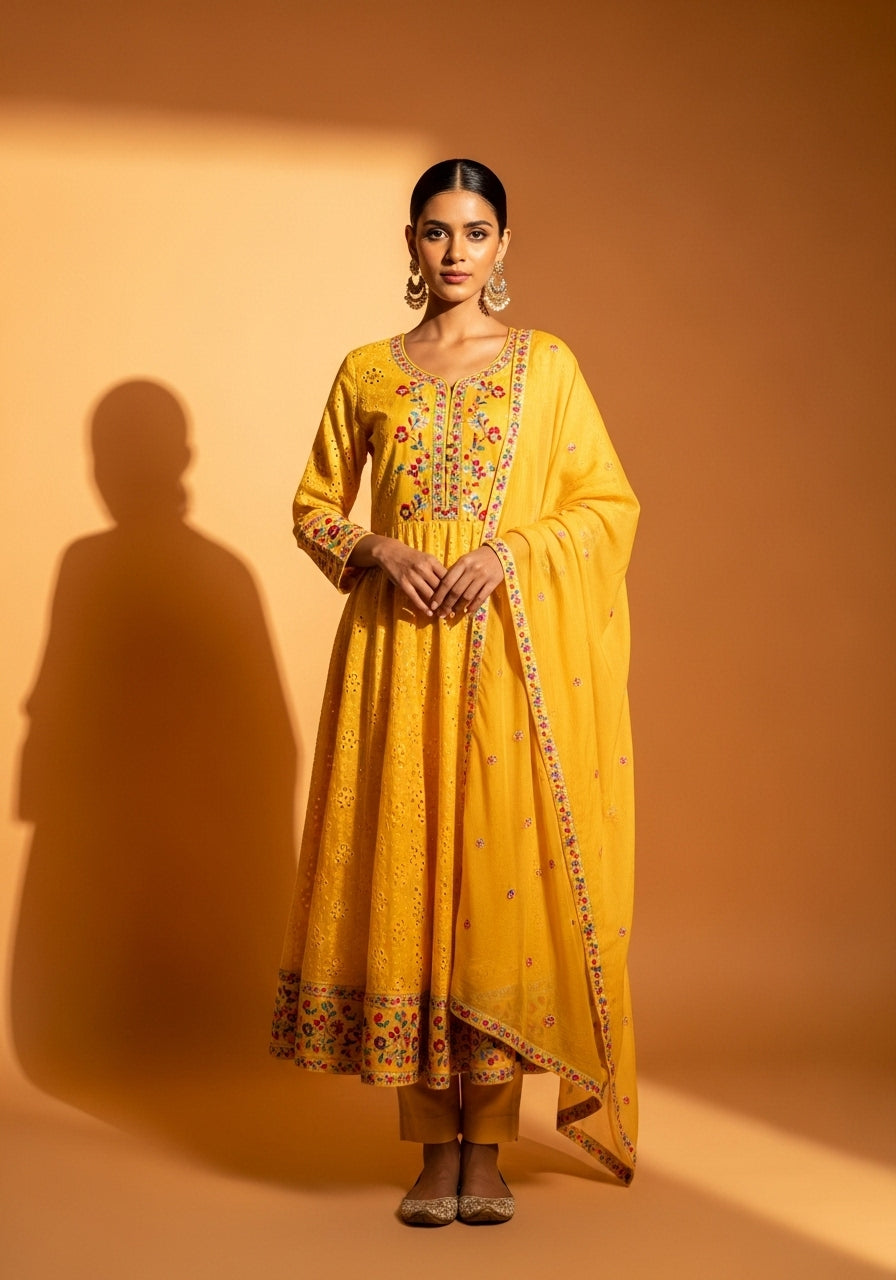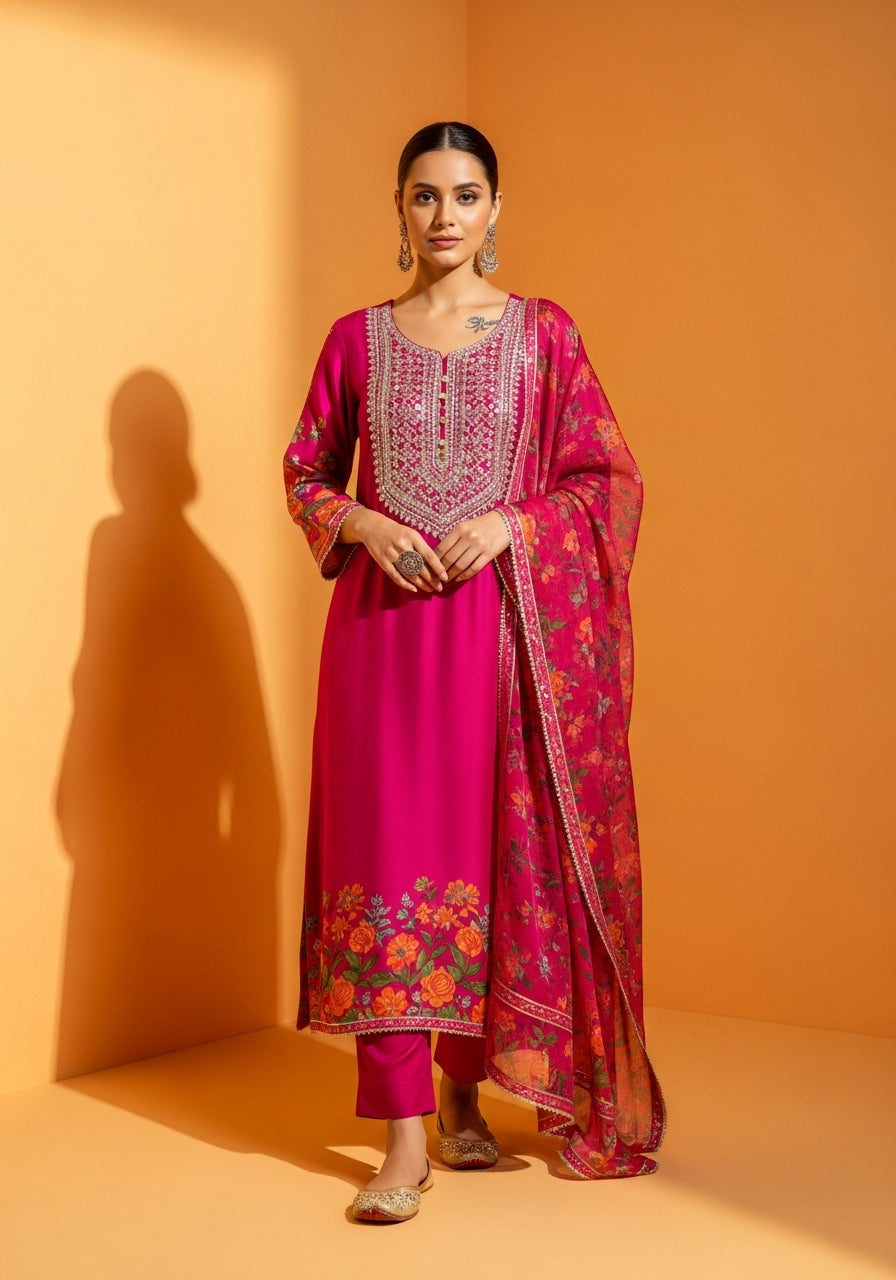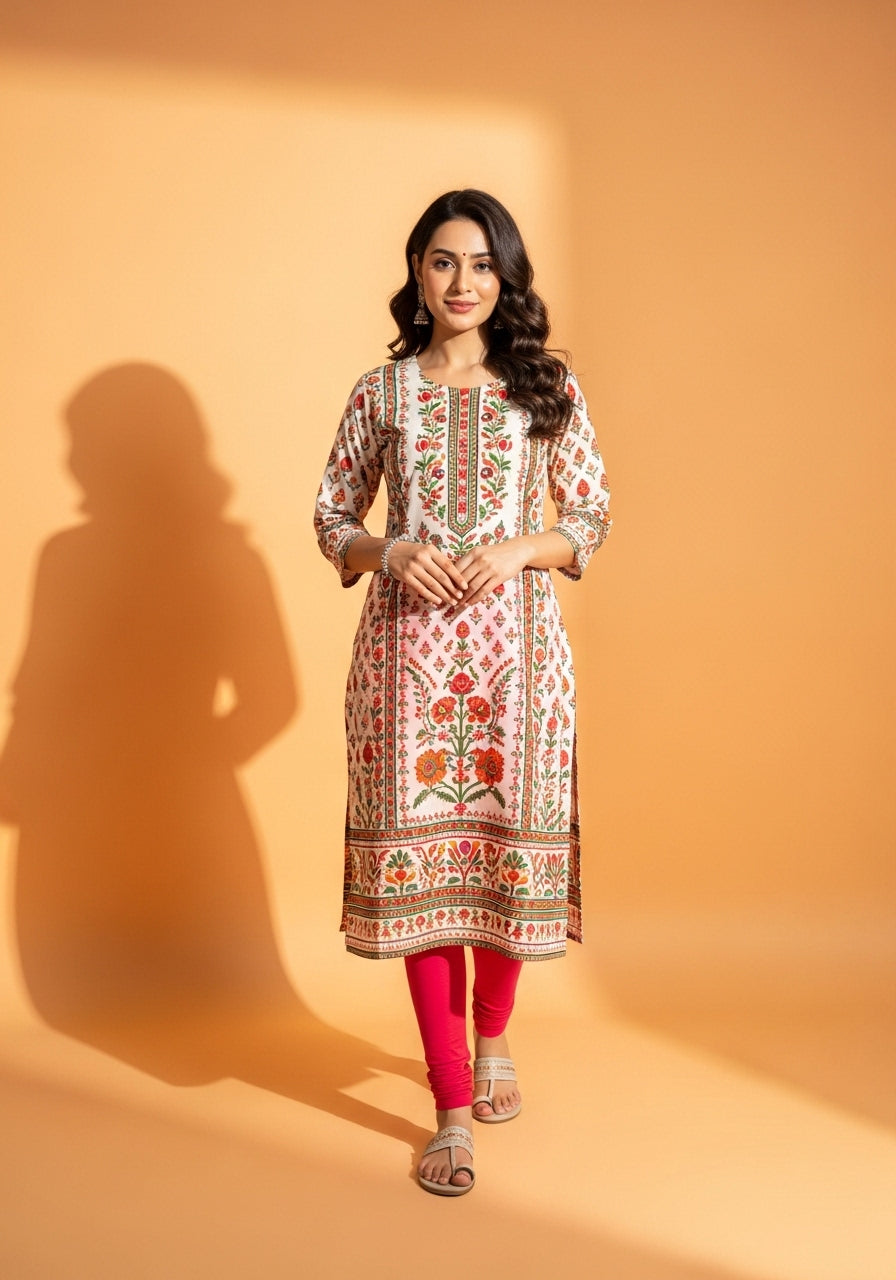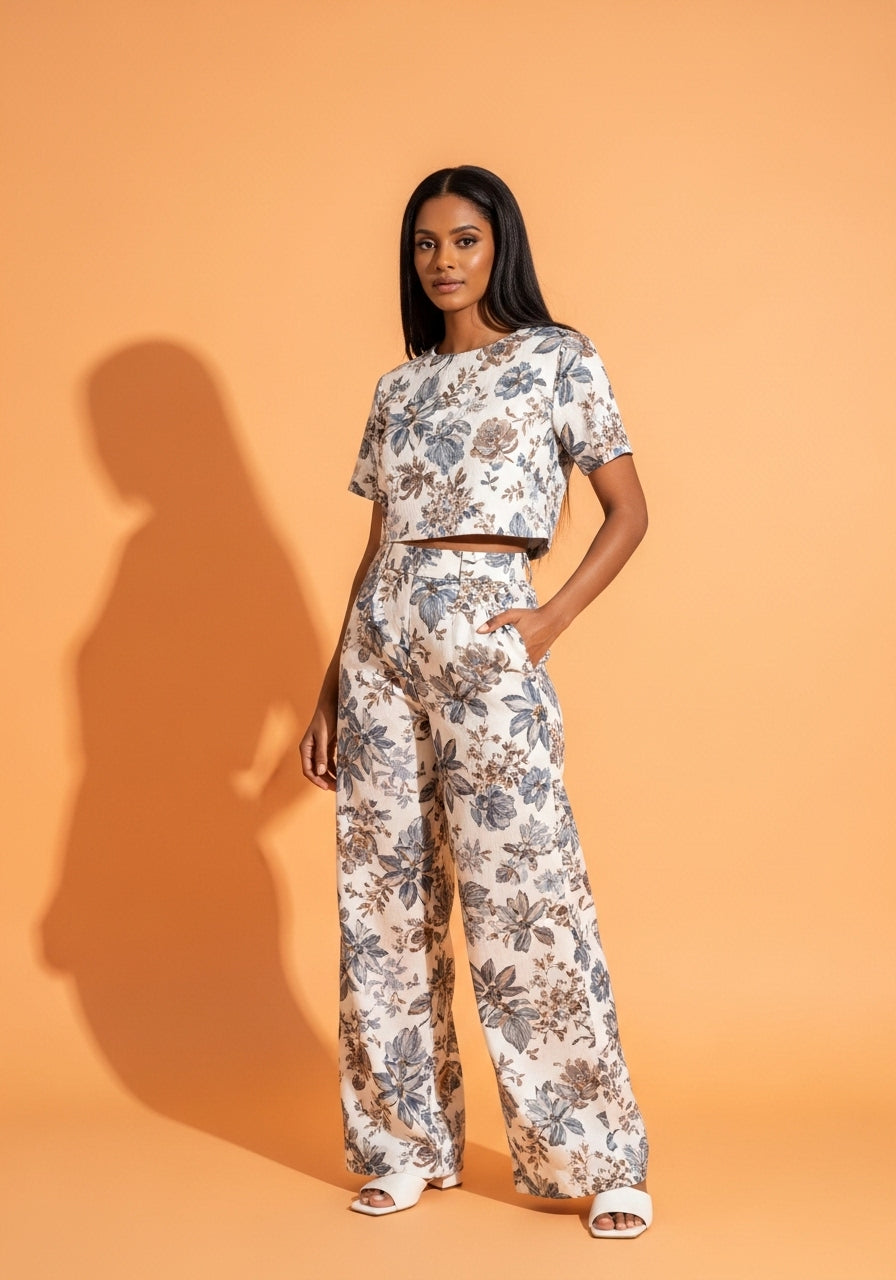
The Kurti Chronicle: A Style Guide to South Asia's Most Versatile Garment
The Ultimate Guide to Kurtis: History, Styles, Fabrics & Styling Tips
Date: June 18, 2025 | By The Navra
The kurti is more than just clothing, it’s a way to express yourself, honor tradition, and embrace fashion. Whether for daily wear, festive occasions, or office attire, kurtis effortlessly blend heritage with modern style. This guide will take you through the history, styles, fabrics, and ways to style kurtis, helping you make the most of this wardrobe essential.
Table of Contents
● 1. A Brief History of the Kurti
The kurti has been around for centuries, evolving from a simple tunic into a fashionable garment. Over time, different cultures have influenced its design. The Mughals introduced luxurious fabrics and embroidery, shaping the elegant styles we see today. Now, designers experiment with modern cuts, patterns, and embellishments, ensuring kurtis stay stylish and relevant.
● 2. Different Kurti Styles: Find Your Perfect Fit
With so many styles available, choosing the right one can be overwhelming. Here’s a quick guide:
- ● Straight Kurti – Simple, classic, and versatile for any occasion.
- ● A-Line Kurti – Fitted at the top and flares at the bottom, great for a flattering look.
- ● Anarkali Kurti – A long, flowy, dress-like kurti, ideal for festive events.
- ● Angrakha Kurti – Features a crossover front, adding a royal touch.
- ● Asymmetric Kurti – Stylish and modern with an uneven hemline.
- ● High-Low Kurti – Shorter in the front, longer at the back, trendy and chic.
Choose a style based on your body type and the occasion!
● 3. Choosing the Right Fabric
The fabric of your kurti affects comfort and style. Here are some options:
- ● Cotton – Perfect for everyday wear; breathable and easy to maintain.
- ● Silk – Elegant and luxurious, great for weddings or parties.
- ● Rayon – Soft and flowy, a great budget-friendly silk alternative.
- ● Georgette – Sheer and lightweight, often used for festive wear.
- ● Chiffon – Airy and delicate, ideal for summer outfits.
- ● Linen – Durable with a textured look, perfect for a structured fit.
Pick a fabric based on the season, comfort, and occasion.
● 4. How to Style Your Kurti
You can mix and match kurtis with different bottoms for a fresh look every time:
- ● With Leggings – A comfortable, classic everyday look.
- ● With Jeans – A modern, stylish fusion outfit.
- ● With Palazzo Pants – Flowy and bohemian, ideal for summer.
- ● With Skirts – Feminine and elegant, great for celebrations.
- ● As a Dress – Long kurtis can be worn alone, with a belt for definition.
Accessorize with jewelry, scarves, and footwear to enhance your outfit.
● 5. Accessorizing Your Kurti
The right accessories can elevate your look:
- ● Jewelry – Earrings, bangles, or a statement necklace add charm.
- ● Scarves – Adds texture, warmth, and color to your look.
- ● Footwear – Sandals, flats, heels, or wedges, depending on the occasion.
- ● Bags – A stylish handbag completes the look.
- ● Belts – Define your waist and give structure to the kurti.
Experiment with accessories to make your outfit stand out.
● 6. How to Take Care of Your Kurtis
To keep your kurtis looking new:
- ● Wash gently – Hand wash or use a mild machine cycle.
- ● Sort by color – Wash similar colors together.
- ● Air dry – Avoid tumble drying to prevent damage.
- ● Iron carefully – Use a low heat setting, especially for delicate fabrics.
- ● Store properly – Fold neatly or hang to avoid wrinkles.
With proper care, your kurtis will last for years!
● Final Thoughts
The kurti is a versatile, stylish, and timeless part of every woman’s wardrobe. Whether you prefer traditional or modern styles, there’s a kurti for every occasion. Play around with fabrics, styles, and accessories to make your kurti look unique and fashionable.
© 2025 The Navra. All rights reserved.
